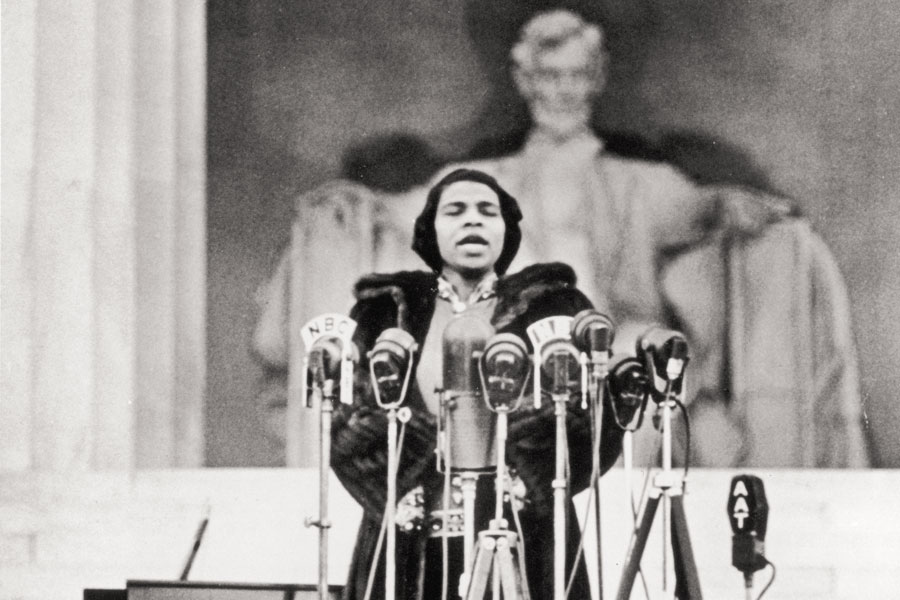At the height of the civil rights movement, Martin Luthor King, Jr. spoke of the hope that all men are created equal from the steps of the Lincoln Memorial. But did you know that King wasn’t the first African American to make a stand against racism at the famous steps?
When the Daughters of the American Revolution denied usage of the Constitution Hall to Marian Anderson because she was black, first lady Eleanor Roosevelt was outraged. She immediately resigned from DAR.
Who was Marian Anderson?
On February 27, 1897, Marian Anderson was born in Philadelphia, Pennsylvania. She was the oldest daughter of an African American coal mine worker and ice dealer. Anderson had a talent for singing. She was a choir member at the Union Baptist Church when she was just 6. She earned her nickname Baby Contralto here too.
Anderson’s parents were supportive of her musical interests. They bought her a piano when she was 8, even if they could not afford formal music lessons. Anderson is self-taught and was very dedicated to the choir. She rehearsed all the soprano, alto, tenor, and bass until she mastered it.
Her commitment to music inspired the choir to raise $500 to pay for voice lessons with the respected Giuseppe Boghetti. And just after two years with Boghetti, Anderson won a chance to sing at the Lewisohn Stadium in New York after winning a contest organized by the New York Philharmonic Society.
Her career as a singer took off. President Franklin Roosevelt invited her to perform in the Whitehouse, and she was the first African American to receive such honor. Anderson also performed the national anthem during President John F. Kennedy’s inauguration.
Anderson retired from performing in 1965 but still was awarded a Grammy Award for Lifetime Achievement just two years before she passed away on April 8, 1933. (Source: Biography)
Anderson and the Lincoln Memorial Concert
In 1939, Anderson was invited by Howard University to sing in Washington as part of a concert series the university is sponsoring. The university had a dilemma because of Anderson’s international success and reputation. They had to find a place for Anderson to perform and accommodate the crowds they anticipated.
They decided to use the Constitution Hall, owned by the Daughters of the American Revolution. DAR refused to let them use the hall simply because Anderson was a woman of color and because there was a white-artist-only clause printed in every contract issued by the DAR.
One of the members of DAR back then just happened to be the first lady, Eleanor Roosevelt. Upon hearing the decision not to allow Anderson access to the Hall, Roosevelt felt livid. She immediately sent a letter of her resignation from the group and wrote about the incident in her weekly column. She thought that they had taken an action that was widely criticized and for her to remain as a member of DAR implies that she is approving of the action.
Walter White, then executive secretary to the NAACP, had an idea to have Anderson sing outdoors on the steps of Lincoln Memorial. Secretary of Interior Harold Ickes approved the logistics and led Anderson onto the stage for her historic performance on April 9, 1939. (Source: NPR)
